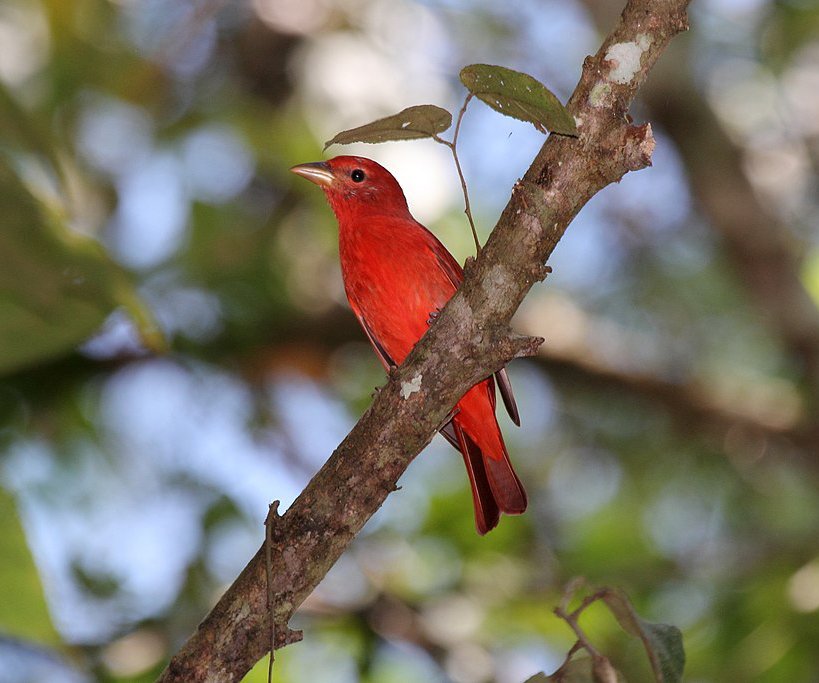Desert Bird Spotlight: Summer Tanager
by Ornithologist Steve Myers
Summer Tanager / Wikimedia Commons
I have been birding for 45 years, and it all started at Whitewater Preserve. Back in the day, the Preserve was the Whitewater Trout Farm, where I worked and lived in the mid 1970s through the mid 1980s. My spark bird — the one that piqued my interest and set me on my birding path — was the Summer Tanager (Piranga rubra). One day I noticed an all-red bird, and had no idea what it was, or that all-red birds occurred in California. I bought a Peterson Field Guide, and the rest, as they say, is history.
Summer Tanagers nest in only a handful of areas in California, including along the Colorado River, at Morongo Valley, the Kern River area, the Mojave River near Victorville, and of course, Whitewater Canyon. Mature riparian woodland or forest is their prime nesting habitat, including areas dominated by cottonwoods and willows. At the trout farm, nesting was not only in cottonwoods, but also in the nonnative Siberian Elms that formerly occurred in the area that is now the Preserve’s picnic area. Breeding territories at the Preserve are now primarily within cottonwoods and sycamores.
Summer Tanagers are summer visitors to California, usually arriving in the spring starting in mid April. After breeding, they depart by October, and fly to wintering areas from central Mexico south to Brazil. A few typically winter along southern California’s coast each year.
Nests are usually high in the trees (in the Kern River area a study indicated an average height of nearly 40 feet). Nests are constructed wholly by the female, and are comprised of dried herbaceous vegetation. Three to four eggs are laid, and incubation begins with the laying of the last egg. The incubation period is 11-12 days, and the nestlings fledge in 8 – 10 days after hatching. The plumage of newly fledged birds of both sexes is yellowish, similar to adult females, but juvenile males can have some scattered red feathers in their body plumage.
During the nesting season, their diet is comprised mainly of large insects, including cicadas, spiders, true bugs, grasshoppers, beetles, butterflies, moths, bees, and wasps. Various insect larvae make up a large part of their diet. During the breeding season, they are often easily located by their beautiful songs, which are similar to the songs of American Robins and Black-headed Grosbeaks. They often give calls that some field guides render as “pit-ti-tuck.” There is one pair nesting at the Preserve in 2024, and they can often be seen around the parking lot and ranger station. The male was captured during one of my recent bird banding classes, and if you get a good look at him you may notice a band on his right leg. I am sure that I am not alone when I say that the Summer Tanager was my spark bird.
Steve Myers is an ornithologist and retired wildlife biologist and photographer who resides in Riverside County. He is an active volunteer for The Wildlands Conservancy and leads frequent bird walks at Whitewater Preserve.

